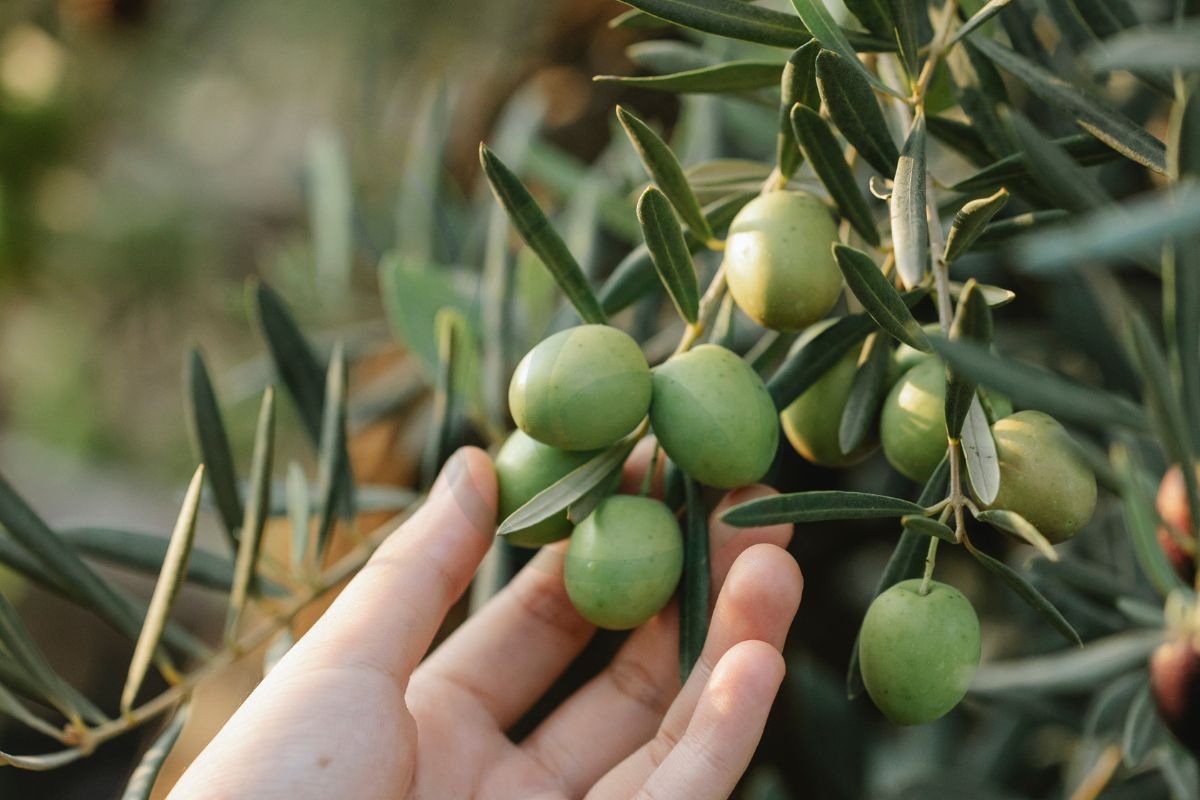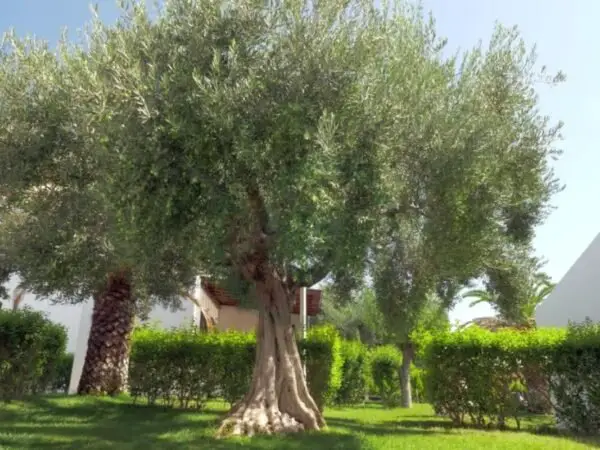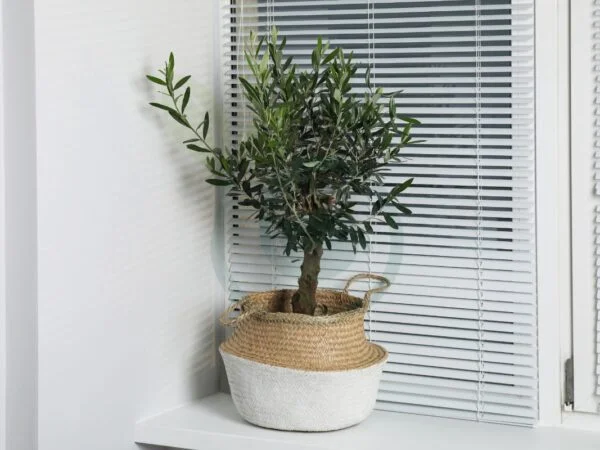Ever wondered if you could cultivate your own olive trees right here in sunny Florida? The idea of growing these Mediterranean gems in the Sunshine State might seem far-fetched, but with the right knowledge and care, it's entirely possible. From selecting the ideal variety for the climate to understanding soil requirements and proper maintenance practices, successfully nurturing olive trees in Florida can be a rewarding endeavor. Join us as we explore the feasibility of cultivating this iconic tree in a non-traditional setting like Florida.
Key Takeaways
- Consider Climate Suitability: Evaluate your specific location in Florida to ensure it meets the climate requirements for growing olive trees, considering factors like temperature, humidity, and pollen.
- Choose Suitable Olive Tree Varieties: Select olive tree varieties that are well-suited for Florida's climate and soil conditions to increase the chances of successful growth.
- Follow Proper Planting and Care Techniques: Adhere to recommended planting and care practices for olive trees, including proper watering, fertilization, and pruning, to promote healthy growth and fruit production.
- Be Aware of Challenges: Understand the potential challenges of growing olive trees in Florida, such as pests, diseases, and soil conditions, and proactively address them to ensure the trees thrive.
- Integrate Olive Trees into Your Landscape: Explore ways to incorporate olive trees into your landscape design in Florida, considering their aesthetic appeal and functional benefits.
- Harvest and Utilize Olives: Learn about the optimal time and methods for harvesting olives in Florida and explore different ways to use the harvested olives, whether for culinary purposes or olive oil production.
Climate Suitability
Florida's warm climate and long growing season create an ideal environment for olive tree cultivation. The state's mild winters and hot summers offer the perfect conditions for olive trees to flourish, benefiting from the abundance of sunshine that Florida receives. This sunny state provides optimal circumstances for olive tree growth.
Olive trees thrive in well-draining soil with a pH level ranging between 6 and 8. In Florida, sandy or loamy soils are particularly suitable for cultivating olive trees due to their excellent drainage properties. Ensuring proper soil fertility is crucial, where adding organic matter can significantly enhance the quality of the soil.
Olive trees exhibit impressive temperature tolerance, making them well-suited for Florida's varying climate conditions. These trees can endure a wide range of temperatures, including high summer heat and mild winter frosts common in different parts of Florida. Certain varieties of olives are more cold-resistant than others, allowing successful cultivation across various regions within the state.
In terms of characteristics specific to olive tree cultivation in Florida:
- Warm climate with extended growing seasons
- Mild winters and hot summers conducive to growth
- Ideal sandy or loamy soils with good drainage
- Tolerance to a wide range of temperatures from high heat to mild frost
When considering whether you can grow olive trees in Florida: Pros:
- Favorable warm climate and long growing season.
- Tolerance to both high summer temperatures and mild winter frosts.
- Ability to cultivate different olive varieties suited for various regions within Florida.
Cons:
- Soil pH management required between 6 and 8.
- Need for well-draining soils like sandy or loamy types. 3.Organic matter addition necessary for enhancing soil fertility.
Olive Tree Varieties
Suitable Types
In Florida, Arbequina, Koroneiki, and Picual are ideal olive tree varieties. These types thrive in the state's climate and soil conditions. Picking the right variety is crucial for successful olive cultivation in Florida. Each variety offers unique characteristics that cater to different preferences and needs.
Choosing Arbequina can lead to an early harvest of small, flavorful olives perfect for oil production. Koroneiki trees produce abundant small fruit known for their high-quality oil content, while Picual yields larger olives with a robust flavor profile suitable for both oil extraction and table consumption.
Selecting from these adaptable varieties significantly increases the chances of a successful harvest.
Reproductive Fertility
Floral Structure
Olive trees boast inconspicuous flowers containing both male and female parts, allowing self-pollination. This unique floral structure enables olive trees to bear fruit without needing external pollinators or cross-pollination assistance. The self-sufficiency of their reproductive system simplifies the cultivation process by eliminating the dependency on other trees or insects for pollination.
This inherent ability makes olive trees stand out among fruit-bearing plants as they efficiently reproduce without external intervention due to their self-contained reproductive organs.
Planting Olive Trees
Site Selection
When considering planting olive trees in Florida, choosing the right site is crucial. Opt for a sunny location with excellent air circulation to ensure optimal growth conditions. Avoid low-lying areas that are susceptible to frost pockets and locations with poor drainage. Take into account the size and growth habits of olive trees when selecting a suitable planting spot.
It's essential to provide your olive tree with an environment that promotes healthy development. By selecting a sunny area with good airflow, you create an ideal setting for the tree to thrive without being exposed to frost or waterlogging issues. Ensure proper drainage by avoiding areas prone to water accumulation.
Planting Process
When it comes time to plant your olive tree in Florida, follow these steps for success: Begin by digging a hole that is twice as wide and deep as the root ball of the tree. Carefully remove the tree from its container, taking care not to damage its roots during this process. Once placed in the hole, backfill it with soil while gently firming it around the roots to eliminate any potential air pockets.
Proper planting techniques are vital in ensuring that your olive tree establishes itself successfully in its new environment. By digging a hole that provides ample space for root growth and handling the tree delicately during transplanting, you set up your olive tree for long-term health and productivity.
Caring for Olive Trees
Watering Needs
Olive trees in Florida thrive with consistent watering, especially crucial during dry spells. Deep watering is key, encouraging roots to grow deep and withstand droughts. On the flip side, avoid overwatering, as it can cause root rot and related problems.
To maintain optimal growth and fruit production of olive trees in Florida, regular fertilization is essential. Using a balanced fertilizer specifically designed for fruit trees following the manufacturer's guidelines is recommended. Splitting fertilizer applications throughout the growing season can significantly benefit olive trees' health in Florida.
Fertilization
Olive tree care also involves pruning practices to ensure their well-being. For cool-season pruning in late winter or early spring in Florida, remove dead or diseased branches along with any crossing or crowded ones. Pruning not only helps shape the tree but also enhances airflow and overall health.
Challenges in Florida
Pest Management
Olive trees in Florida face challenges from various pests like olive fruit flies, scales, and mites. To effectively manage these pests, regular monitoring is essential to detect any issues early on. Employing integrated pest management practices that include cultural controls and biological agents can help combat these pesky invaders. For example, introducing beneficial insects like ladybugs can control aphids naturally.
Prevention is key. Implementing strategies such as keeping the area around the tree clean and free of debris can discourage pests from settling in. Using sticky traps or pheromone traps can help monitor pest populations and take action promptly if needed.
Disease Control
In addition to pests, olive trees in Florida are vulnerable to diseases like olive knot, verticillium wilt, and anthracnose. Preventive measures play a crucial role in disease control for olive trees. Regularly inspecting the trees for any signs of disease and promptly removing infected branches through proper sanitation practices can help contain the spread of diseases.
Furthermore, opting for disease-resistant varieties when planting new olive trees can significantly reduce the risk of infections. In cases where diseases become severe despite preventive efforts, fungicides may be necessary following recommended guidelines to effectively manage the issue without harming the tree or surrounding environment.
Cultivation Techniques
North Florida Strategies
In North Florida, where winter temperatures can drop significantly, it's crucial to choose cold-hardy olive tree varieties. These trees are better equipped to withstand the lower temperatures of the region. To protect olive trees during extreme cold snaps or frosts, consider providing additional protection such as covering them with frost cloth or temporarily moving potted trees indoors.
Proper site selection plays a vital role in the success of growing olive trees in North Florida. Ensure that the planting area receives adequate sunlight, has well-draining soil, and is sheltered from strong winds. Implementing good cultural practices like regular pruning and fertilizing will help maximize the growth and fruit production of olive trees in this region.
Central Florida Tips
When cultivating olive trees in Central Florida, it's essential to select varieties that thrive in the region's specific climate and soil conditions. Varieties like Arbequina and Koroneiki are known for their adaptability to Central Florida's environment. Due to potential drought periods in this area, closely monitor irrigation needs to ensure optimal growth and fruit development.
Pests and diseases can pose challenges when growing olives in Central Florida orchards. Keep a close eye on common pests like scales and aphids that may affect olive trees' health. Regularly inspect leaves for signs of diseases such as anthracnose or verticillium wilt, taking prompt action if any issues arise to prevent further spread within the orchard.
Landscape Integration
Aesthetic Value
Olive trees in Florida can significantly enhance the landscape with their silver-green foliage and distinctive gnarled trunks. These trees bring a touch of the Mediterranean to the surroundings, creating unique focal points that stand out. Their evergreen nature ensures that they provide visual interest throughout the year, making them an excellent addition to any garden or outdoor space.
The aesthetic appeal of olive trees goes beyond just their appearance; they also offer various environmental benefits. With their extensive root systems, these trees help prevent soil erosion, contributing to environmental sustainability in Florida. Olive trees serve as valuable carbon sinks, absorbing carbon dioxide from the atmosphere and aiding in mitigating climate change effects locally and globally. Furthermore, cultivating olive trees promotes biodiversity by providing habitats for beneficial insects and birds in the area.
Environmental Benefits
One key advantage of incorporating olive trees into Florida's landscape is their ability to reduce soil erosion thanks to their expansive root systems. This feature not only helps maintain soil health but also prevents land degradation over time due to factors like heavy rainfall or strong winds. Moreover, by acting as carbon sinks, olive trees play a crucial role in combating climate change by absorbing excess carbon dioxide from the air—a significant benefit for both local environments and worldwide efforts towards reducing greenhouse gas emissions.
In terms of promoting biodiversity, planting olive trees can create thriving ecosystems within Florida's landscapes by attracting various beneficial insects and birds seeking shelter and food sources among these tree species' branches and leaves. This increased biodiversity contributes to a more balanced ecosystem overall while supporting natural pollination processes essential for plant reproduction across different species present within the environment.
Harvesting and Use
Harvest Timing
Olive harvest in Florida usually takes place from October to December, varying based on the olive tree variety and local conditions. The timing of the harvest plays a significant role in determining the quality and flavor of the fruit. Monitoring indicators of ripeness regularly is crucial for identifying the ideal moment to harvest olives. This ensures that they are picked at their peak, ready for processing.
Understanding when they are ripe is essential. Factors like color changes, firmness, and taste should all be considered before picking them. For instance, green olives are typically harvested earlier than black ones since their taste profile differs during various stages of ripening. By monitoring these signs closely, growers can ensure that their olives are harvested at just the right time.
Olive Products
Apart from consuming fresh olives directly from the tree, there's a wide range of products that can be made from olives grown in Florida. These include popular options such as olive oil (both virgin and extra virgin), table olives for snacking or cooking, as well as olive paste used in various culinary dishes. In recent years, producing high-quality extra virgin olive oil has gained traction among local producers in Florida due to its increasing popularity.
Exploring different ways to utilize harvested olives not only adds value but also enhances the overall experience of cultivating olive trees in Florida landscapes. From creating homemade infused oils with herbs or spices to pickling fresh table olives for personal consumption or sale at local markets – there's a myriad of possibilities.
Resources and Support
UF/IFAS Publications
The University of Florida's Institute of Food and Agricultural Sciences (UF/IFAS) offers research-based publications on growing olive trees in Florida. These resources provide essential information, guidelines, and tips for successful cultivation. By accessing these publications, growers can make informed decisions based on scientific research.
UF/IFAS publications are valuable tools that offer recommendations to help olive tree growers overcome challenges they may encounter during the cultivation process. For example, these guides might include insights on soil types suitable for olive trees in Florida or tips on pest management strategies specific to the region. Growers can benefit significantly from incorporating this knowledge into their practices.
-
Pros:
-
Research-based information
-
Recommendations for overcoming challenges
-
Cons:
-
Limited to information specific to Florida conditions
Community Groups
Joining local community groups focused on olive tree cultivation is another excellent way for growers to find support and share knowledge with like-minded individuals. These groups often host workshops, events, and networking opportunities tailored to those interested in cultivating olives in Florida.
By engaging with community groups dedicated to olive tree cultivation, growers have the chance to collaborate with others who share similar interests and challenges. Through this collaboration, a network of fellow growers is established where experiences are shared, best practices are discussed, and solutions are explored together.
- Benefits:
You've learned that growing olive trees in Florida is challenging but possible with the right care and attention. Understanding the climate, choosing suitable varieties, and implementing proper cultivation techniques are crucial steps. Despite the obstacles faced in Florida's unique environment, your dedication and effort can lead to a successful olive tree harvest. Remember, challenges may arise, but with perseverance and knowledge, you can overcome them and enjoy the fruits of your labor. Keep nurturing your olive trees, stay informed about best practices, and don't hesitate to seek support when needed. Your journey to cultivating olive trees in Florida is a rewarding adventure waiting to unfold.
Frequently Asked Questions
Can olive trees thrive in Florida's climate?
Yes, olive trees can grow well in certain parts of Florida due to its warm climate and well-drained soil. However, selecting the right variety suited for the region is crucial for successful cultivation.
What are some recommended olive tree varieties for Florida?
Varieties like Arbequina, Picual, and Koroneiki are well-suited for growing in Florida's conditions. These cultivars are known for their adaptability to warmer climates and produce high-quality olives ideal for oil production.
How should I plant olive trees in my Florida garden?
When planting olive trees in Florida, choose a sunny location with good drainage. Ensure proper spacing between trees to allow adequate air circulation. Planting during the cooler months can help young trees establish better root systems.
What care practices do olive trees require in a Florida environment?
Regular watering, especially during dry periods, is essential for young olive trees. Pruning to shape the tree and remove dead wood promotes healthy growth. Applying organic mulch around the base helps retain moisture and suppresses weeds.
What challenges might arise when growing olive trees in Florida?
Pest infestations such as fruit flies or fungal diseases like anthracnose can pose challenges to cultivating olives in Florida. Extreme weather events like hurricanes may impact tree health if not adequately protected.
How can I integrate olive trees into my landscape design effectively?
Incorporate olive trees strategically into your landscape by considering their mature size and sunlight requirements. Utilize them as focal points or create Mediterranean-inspired themes with complementary plants like lavender or rosemary for a cohesive look.
When is the best time to harvest olives from my Florida-grown tree?
Harvest time typically falls between September and November when olives transition from green to black on the color spectrum. Regularly monitor ripeness levels by conducting taste tests until achieving desired flavor profiles before harvesting.
Image Source: Paid image from CANVA




